New F8 8-Bay M.2 NVMe SSD SSD from Terramaster Coming later in 2024
IMPORTANT – Terramaster F8 SSD PLUS Review NOW LIVE – You Can Read it HERE
I’ve recently gathered some intriguing information about the upcoming Terramaster F8 SSD and F8 SSD PLUS Desktop NAS devices. These devices are slated to launch in September 2024, though this date is still tentative. Pricing details have not been officially confirmed, but temporary Amazon pages suggest that the F8 SSD will be priced at $999, while the F8 SSD PLUS will be $1299. Both devices are set to feature eight M.2 NVMe SSD bays, and they will come in a new, much smaller casing compared to other devices in Terramaster’s portfolio. This new form factor could make them a more appealing choice for those with limited space but requiring high-performance storage solutions.
NOTE – Regarding the Terramaster NAS and SSD Giveaway
(Take from the Terramaster Competition page). HERE
IMPORTANT – Terramaster F8 SSD PLUS Review NOW LIVE – You Can Read it HERE
Terramaster F8 SSD PLUS NAS Review – Conclusion and Verdict
You really have to give Terramaster credit here for this system. With so many brands trying to enter the world of dedicated flash SSD storage in the last year or so, the F8 SSD Plus is hands down one of the most impressively designed options out there. Somehow arriving with more storage than most options out there, whilst also being the smallest. Long-time storage veterans are definitely going to ponder temperatures and operational heat when the system has been up and running for long periods of time, but Terramaster has clearly factored this in too with a vast amount of tactical heatsink placement, angled airflow, and painfully necessary SSD performance reductions in order to stop the cart before the horse bolts in terms of heat! The Terramaster F8 SSD Plus is by no means a perfect SSD NAS! Not by a long shot in fact! As long as you keep it realistic in terms of what you expect an eight-bay SSD system of this scale and price point to be able to do, I do not think you will be disappointed! Just make sure to remember that this is not an enterprise piece of kit, and is geared far more towards the prosumer, the enthusiast, and perhaps the small/medium business user.
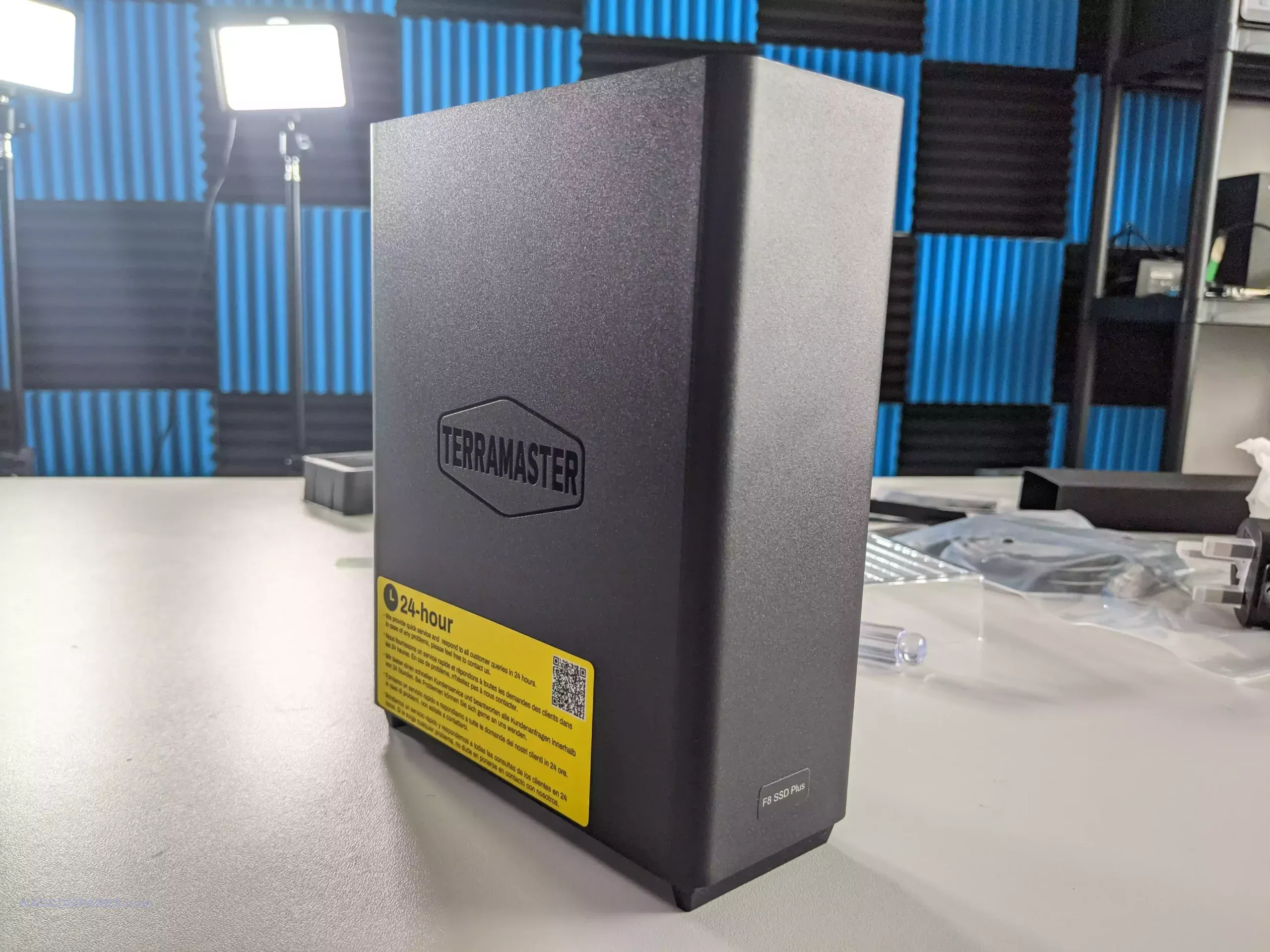
Content creators, photographers, videographers, and those that want to manage a fast-moving database in a small group of users are definitely going to feel the benefits of the F8 SSD Plus. But the absence of higher-tier business features in terms of hardware, such as ECC memory and no network failover out of the box, are going to be a pain for those bigger users that have bigger demands. The TOS 6 software is, on the whole, better than it’s ever been in terms of feature set, functionality, and responsiveness. I am still not really in love with the “Windows 11” aesthetic, and definitely miss the TOS 5 desktop style that has become something of a staple of the NAS software industry, but I’m sure I’ll get used to it. At this point, there really are very few things available in the NAS market in terms of software that are not available here. A flexible RAID system in T-Raid, support of BTRFS, a multi-tiered backup software, multiple client tools, support of Write Once Read Many, volume encryption, two-factor authentication, isolation mode, the list goes on and on. It would be easy to critique the system in saying that it lacks ZFS (with numerous inline features that really benefit SSD use), but then you also remember that Terramaster allows users to use third-party operating systems like UnRAID and TrueNAS, which means that these are not completely off the table anyway!
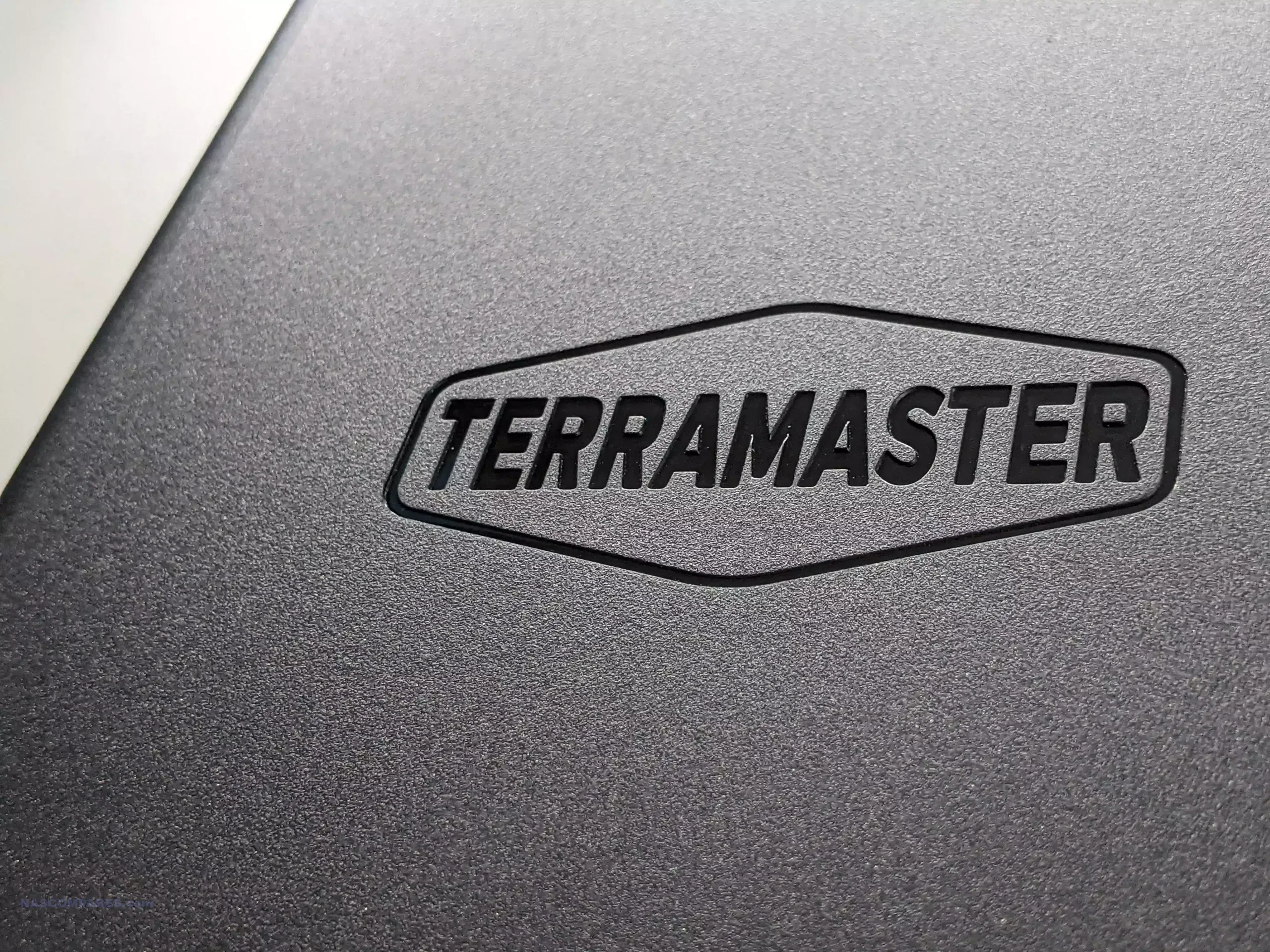
Overall, I’ve got to say that the Terramaster F8 SSD Plus is a fantastically capable, affordable, and impressive desktop flash NAS system, and in a growing competitive marketplace for these kinds of devices, Terramaster has done a phenomenal job in their introduction of a new SSD-targeted solution in their portfolio. It may lack some of the software pizzazz of a Synology or aggressive hardware of a QNAP, but it manages to do its own thing very well, and as long as you keep your expectations realistic, this is a phenomenal NAS for 2024/2025.
2. Post your thoughts and guesses on TerraMaster’s official social media (Facebook, Twitter, Instagram, YouTube), or share them on your own social media along with the event images. Invite your friends to like, comment, and share. Your feedback, ideas, and creativity, along with the exposure and engagement generated for this campaign, will serve as important considerations for prize selection.
The Prizes:
- Special prize for one winner: TerraMaster F4-424 (worth $499)
- Participation prize for 10 winners: 250GB WD RED NVMe SSD at ($69)
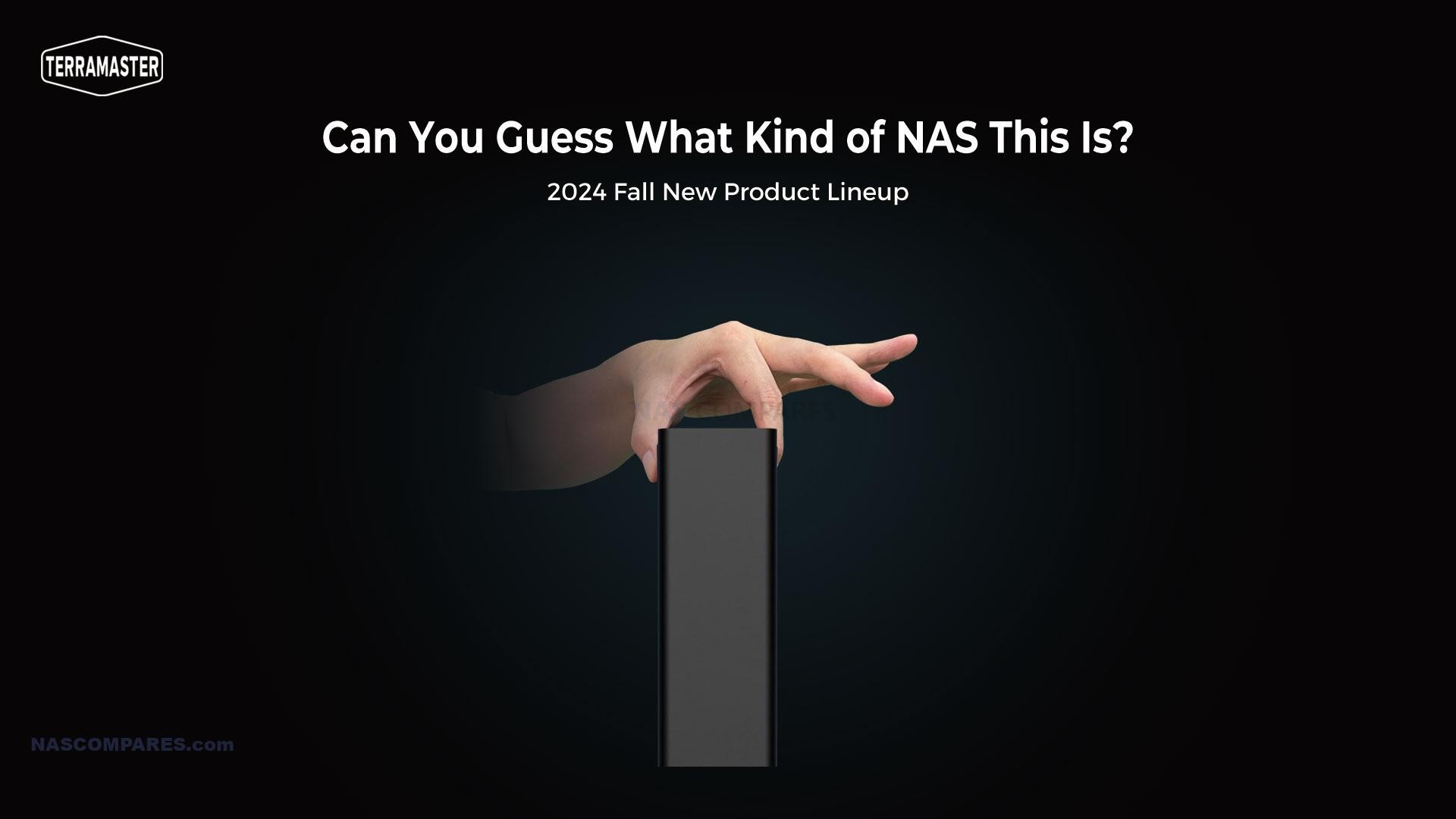
One of the standout features of these new NAS devices is the potential inclusion of 10GbE networking capabilities. However, it’s not clear if both models will feature this. The inclusion of 10GbE would significantly enhance data transfer speeds, making these NAS devices suitable for more demanding applications such as video editing and large-scale data backups. The F8 SSD and F8 SSD PLUS are mentioned to have 16GB of DDR5 memory, but it is not confirmed what each device will actually ship with or whether they will have one or two SODIMM slots. This memory detail leaves room for speculation on how these devices might cater to different market needs, potentially offering upgrade options for users who require more memory for intensive tasks.
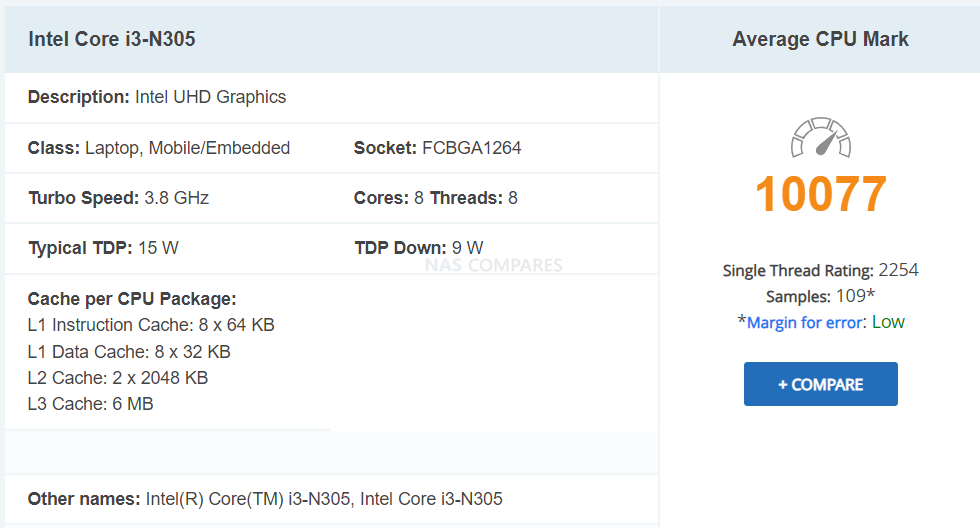
The CPU choice for these devices is particularly interesting. It is suspected that the F8 models will utilize the Intel N305 8 Core i3 Alder Lake processor. This CPU, part of Intel’s N-series, is a mobile segment processor with 8 cores and 8 threads, boasting a max turbo frequency of 3.80 GHz. Given its capabilities, this processor could make the F8 SSD and F8 SSD PLUS quite powerful for their intended use cases, especially for those needing high-speed storage and efficient processing power. The N305’s support for DDR5 memory and integrated Intel UHD graphics further enhances its suitability for a NAS device, ensuring it can handle both storage and light processing tasks effectively.
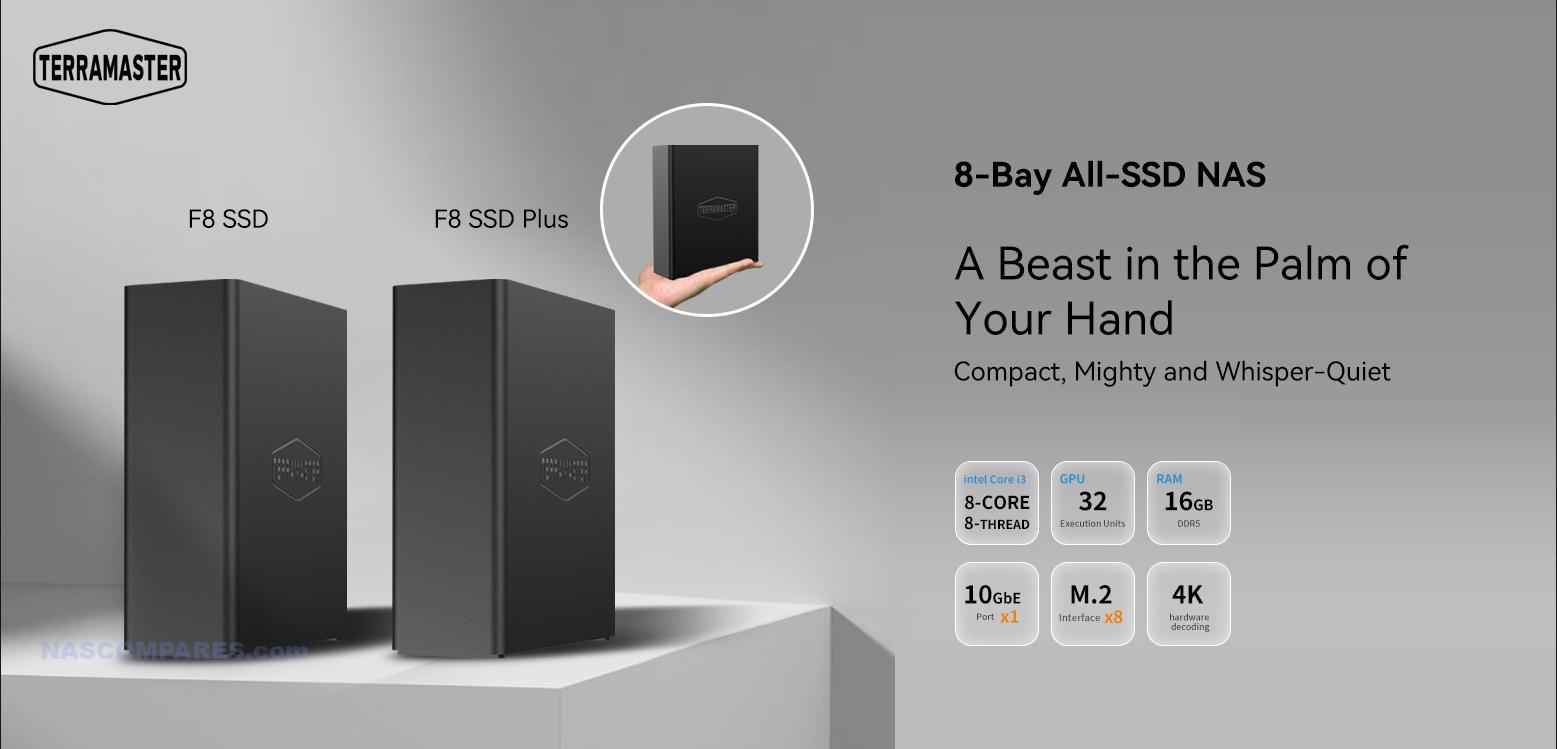
Speculating on the differences between the F8 SSD and the F8 SSD PLUS, it’s possible that the non-PLUS version might have a less powerful CPU or different networking capabilities. For instance, while the F8 SSD PLUS might feature the N305 CPU and 10GbE networking, the regular F8 SSD could potentially have a lower-end CPU, such as the N100 or N95, and perhaps only 2.5GbE networking options. These differences would help cater to different user needs and price points, making the lineup more versatile. This tiered approach allows Terramaster to offer solutions that appeal both to budget-conscious consumers and those looking for top-tier performance.
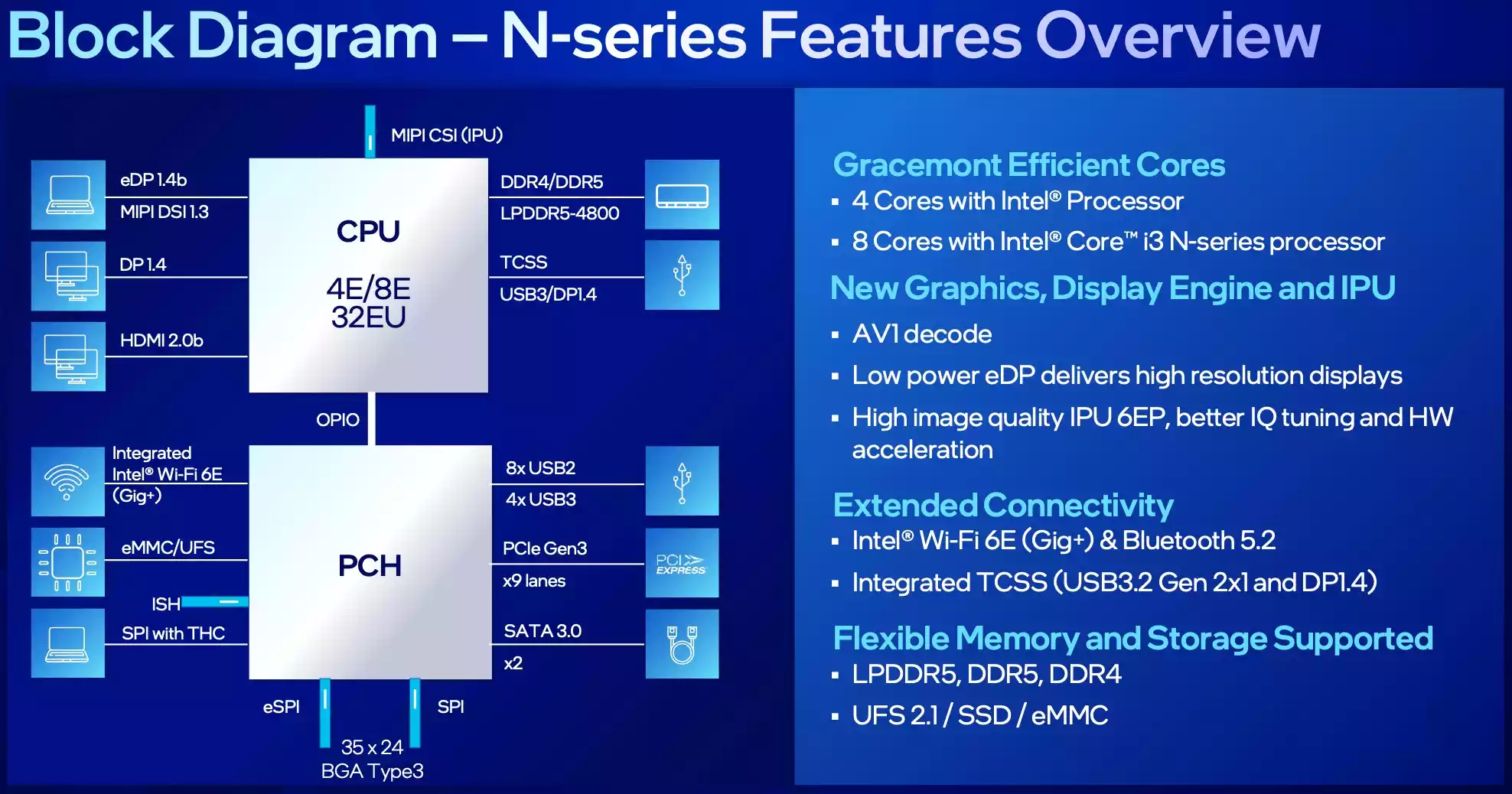
The memory configuration is another area where we might see differences between the two models. The F8 SSD PLUS, with its higher price point, could offer more advanced memory options, such as higher base memory or additional SODIMM slots for easier upgrades. This would make the PLUS model more attractive to users who plan to use their NAS for more memory-intensive applications, such as running virtual machines or high-definition video streaming. On the other hand, the regular F8 SSD might stick to a single SODIMM slot or offer less base memory to keep costs down. In 2024, the affordability of 10GbE NAS devices has significantly improved, making it much easier for consumers to access high-speed networking solutions. A prime example is the MW-N100-NAS motherboard, an ITX form factor motherboard that includes both a CPU and networking capabilities for just around $120. This motherboard features the N100 CPU, which offers a solid balance of performance and efficiency, and it also supports 10GbE networking right out of the box. The affordability and integration of these features into a single, compact motherboard highlight the broader trend of decreasing costs and increasing accessibility of high-speed networking technology. Furthermore, it is anticipated that a version of this motherboard will eventually incorporate the N305 CPU, enhancing its performance capabilities while maintaining its cost-effectiveness. This progression not only reflects advancements in technology but also underscores the growing demand for affordable, high-speed NAS solutions in both consumer and small business markets. The availability of such cost-effective hardware solutions makes it feasible for more users to upgrade their network infrastructure, ensuring faster data transfer speeds and improved overall efficiency in data management tasks.
Find out more about the Topton MW-N100-NAS Mobo HERE
Comparing these new models to the existing Terramaster F4-424 and F4-424 Pro provides some context. The F4-424 features a 4-core N95 CPU, while the F4-424 Pro uses the same N305 i3 CPU suspected for the F8 models and comes with more memory. This suggests that the new F8 devices could follow a similar pattern, with the PLUS model offering enhanced performance and features over the standard model. The memory and CPU differences between the F4-424 and F4-424 Pro might hint at similar distinctions in the F8 lineup. The F4-424 and F4-424 Pro have set a precedent for how Terramaster differentiates between base and premium models, likely reflecting a strategy they will continue with the F8 series.

In terms of storage, both F8 SSD models are expected to have eight NVMe SSD bays, optimized for high-speed performance. This is a significant upgrade from the F4-424 series, which might appeal to users who need even more robust and faster storage solutions. The NVMe SSDs will provide much faster read and write speeds compared to traditional SATA SSDs, making these new NAS devices particularly suitable for environments where speed is critical. Additionally, the new, smaller casing for the F8 series could make these devices more suitable for home or small office environments where space is at a premium. The compact design does not seem to compromise on performance, promising a high-power solution in a small form factor. Al that said, we also have to realistically expect the M.2 NVMe SSD bays to be PCIe Gen 3×1 speed each. Not only because of system temperatures in such a confined space, but also because there are only 9 lanes to play with on the N305.
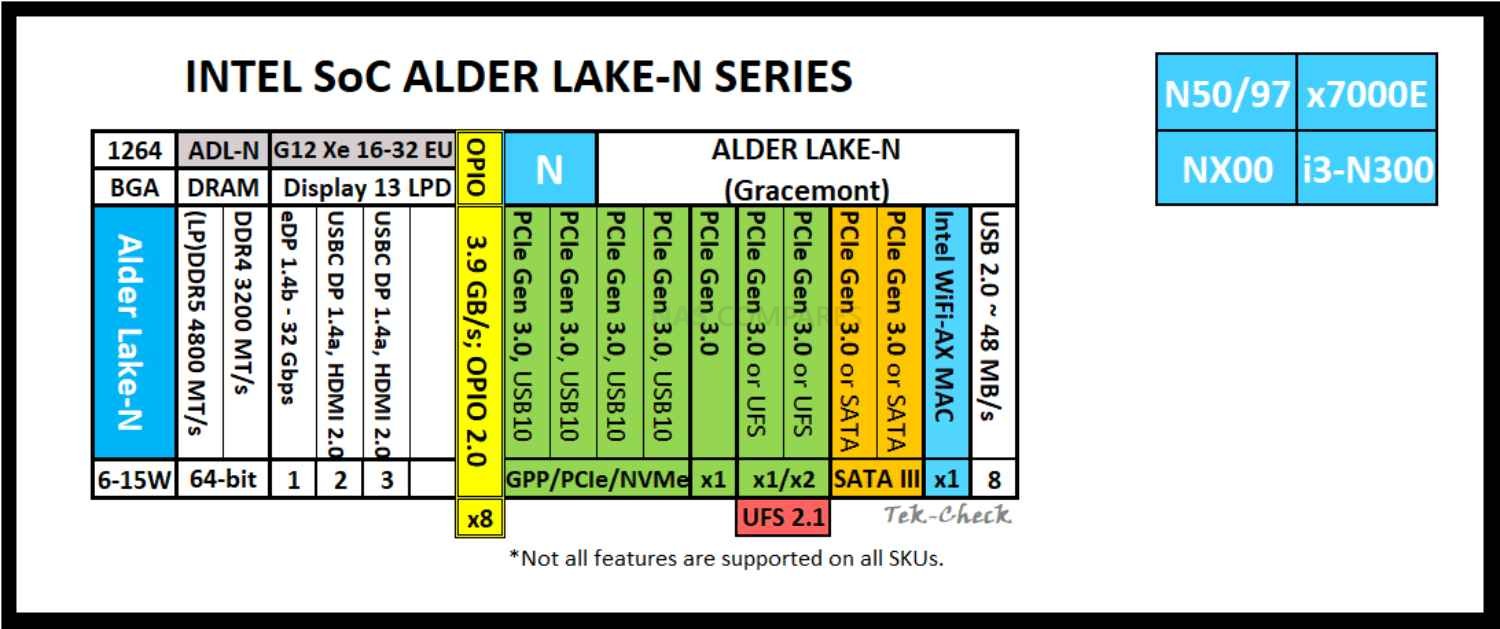
The increasing affordability of 10GbE technology also plays into the potential appeal of the F8 series. With the recently released MW-N100-NAS motherboard on AliExpress, which includes a 10GbE port and support for the N305 CPU, it’s becoming more feasible to include high-speed networking in consumer NAS devices. This trend suggests that Terramaster’s new devices will be well-positioned in the market, offering advanced features at a competitive price. As 10GbE becomes more common, users will expect to see it in mid-range and high-end NAS devices, making it a crucial feature for Terramaster to include in their new models.
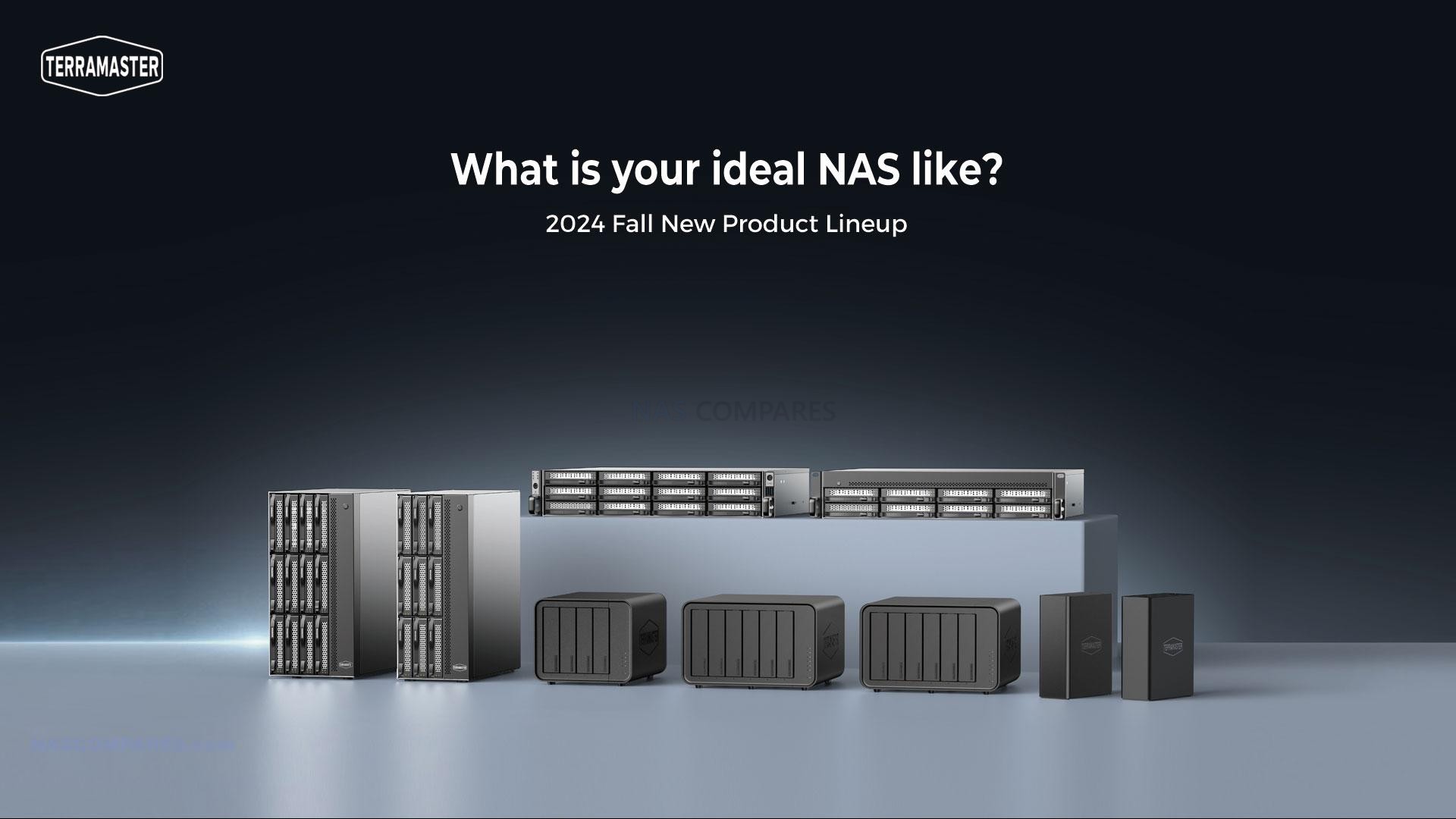
Lastly, there’s an interesting giveaway related to these new Terramaster devices. Terramaster will be giving away an F4-424 NAS and 10x M.2 NVMe SSDs in a soon to be announced giveaway related to a user survey regarding what users ‘WANT’ in their NAS systems. The giveaway invites participants to share their ideas on what their ideal NAS would feature in terms of hardware and software. Details on this giveaway are still to be confirmed, but it presents a great opportunity for users to engage with the brand and potentially win some high-performance hardware. Overall, while there are still many details to be confirmed, the Terramaster F8 SSD and F8 SSD PLUS seem poised to offer significant improvements in performance and features, potentially setting a new standard in the NAS market. As we await further official information, the speculation based on available details suggests that these devices will be a significant step forward in terms of speed, capacity, and overall functionality. This table summarizes the potential differences between the F8 SSD and F8 SSD PLUS, providing a clearer picture of how these models might differentiate themselves in terms of hardware and capabilities.
Estimated Hardware Specifications Table (MASSIVELY ‘TBC’)
| Feature | F8 SSD | F8 SSD PLUS |
|---|---|---|
| Price | $999 | $1299 |
| CPU | Intel N100 / N95 (speculated) | Intel N305 (8 Core i3) |
| Memory | 8-16GB DDR5 | 16-32GB DDR5 |
| Storage Bays | 8x M.2 NVMe SSD | 8x M.2 NVMe SSD |
| Networking | 2.5GbE x2? | 10GbE |
| Launch Date | September 2024 (TBC) | September 2024 (TBC) |
📧 SUBSCRIBE TO OUR NEWSLETTER 🔔
🔒 Join Inner Circle
Get an alert every time something gets added to this specific article!
This description contains links to Amazon. These links will take you to some of the products mentioned in today's content. As an Amazon Associate, I earn from qualifying purchases. Visit the NASCompares Deal Finder to find the best place to buy this device in your region, based on Service, Support and Reputation - Just Search for your NAS Drive in the Box Below
Need Advice on Data Storage from an Expert?
Finally, for free advice about your setup, just leave a message in the comments below here at NASCompares.com and we will get back to you. Need Help?
Where possible (and where appropriate) please provide as much information about your requirements, as then I can arrange the best answer and solution to your needs. Do not worry about your e-mail address being required, it will NOT be used in a mailing list and will NOT be used in any way other than to respond to your enquiry.
Need Help?
Where possible (and where appropriate) please provide as much information about your requirements, as then I can arrange the best answer and solution to your needs. Do not worry about your e-mail address being required, it will NOT be used in a mailing list and will NOT be used in any way other than to respond to your enquiry.

|
 |
Gl.iNet Flint 4 10G+2.5G Router Revealed @CES 2026
EVERYTHING NEW from Minisforum @ CES 2026
Gl.iNet Slate 7 PRO Travel Router (and Beryl 7) REVEALED
Minisforum N5 MAX NAS - 16C/32T, 128GB 8000MT RAM, 5xSATA, 5x M.2, 2x10GbE and MORE
The BEST NAS of 2026.... ALREADY??? (UnifyDrive UP6)
How Much RAM Do You Need in Your NAS?
Access content via Patreon or KO-FI
Discover more from NAS Compares
Subscribe to get the latest posts sent to your email.





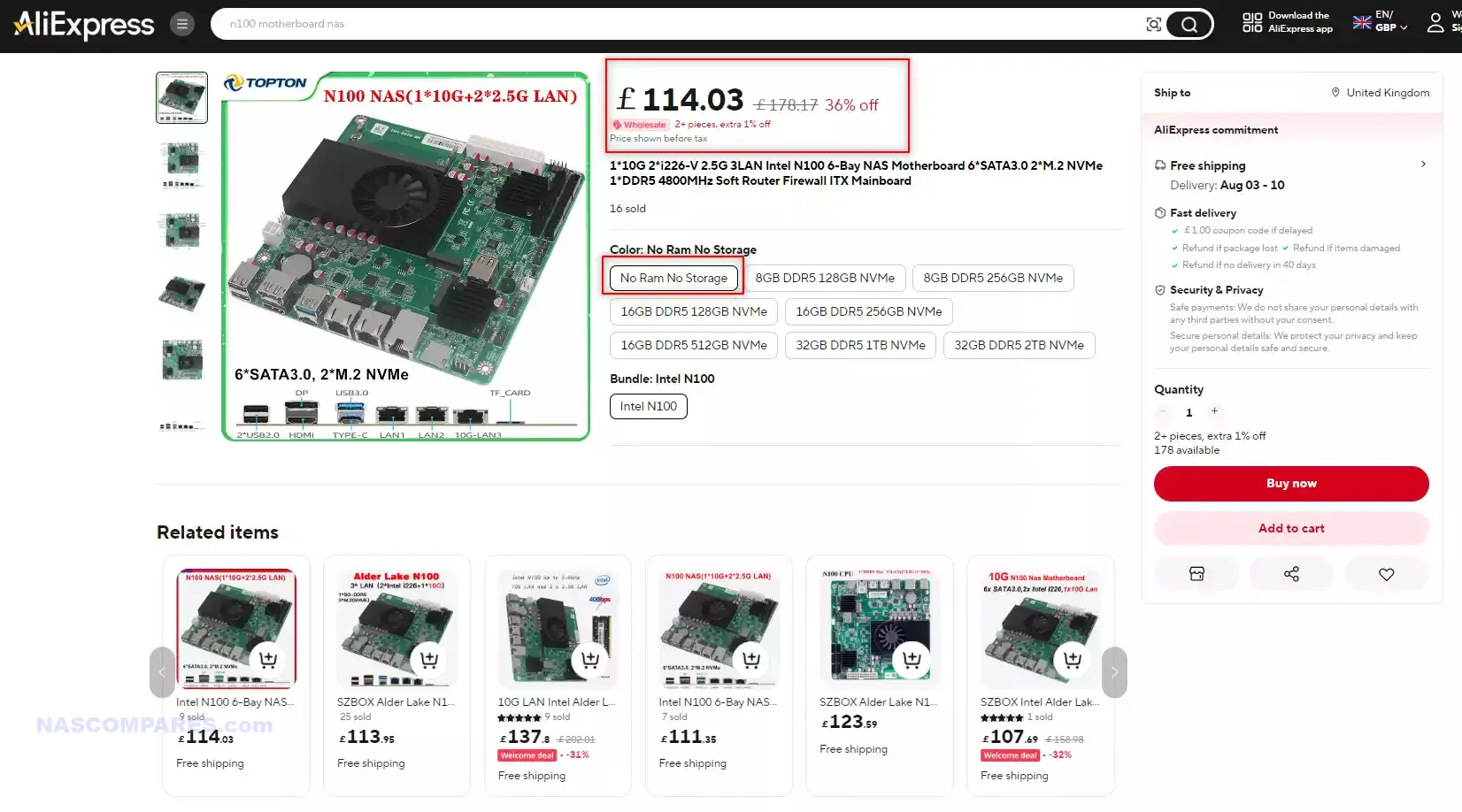



I always thought asustor is from asus
REPLY ON YOUTUBE
Is it possible to install other nas systems? truenas, unraid, openmediavualt or proxmox?
REPLY ON YOUTUBE
I’d rather see just 4x NVMe with double the PCI lanes to each device and a second nic.
REPLY ON YOUTUBE
While i cannot say to much.
i will be reviewing this unit as a distributor.
So lets see what they cooked up in the lab shall we ? 🙂
REPLY ON YOUTUBE
With just 9 PCIe lanes on the processor, how will it perform to the potential of NVMe SSDs?
Each NVMe SSD consumes 4 PCIe lanes.
And how 2 X 10G NIC get PCIe lanes to get that speed?
REPLY ON YOUTUBE
I’ll enter the competition. It’s surprisingly difficult to come up with a “dream” NAS that is theoretically possible vs just something you build out of imaginary components.
REPLY ON YOUTUBE
*Regarding the Terramaster NAS and SSD Giveaway*
(Take from the Terramaster Competition page) here – https://www.terra-master.com/global/press/index/view/id/2044/
1. Share your thoughts on the ideal NAS or dream storage. You can describe your ideas through written descriptions, design sketches, video introductions, or comments. Explain the features, design, user experience, security, and intelligence level that you believe an ideal NAS should have. Additionally, guess what type of NAS is shown in the image below and share your reasoning.
2. Post your thoughts and guesses on TerraMaster’s official social media (Facebook, Twitter, Instagram, YouTube), or share them on your own social media along with the event images. Invite your friends to like, comment, and share. Your feedback, ideas, and creativity, along with the exposure and engagement generated for this campaign, will serve as important considerations for prize selection.
The Prizes:
Special prize for one winner: TerraMaster F4-424 (worth $499)
Participation prize for 10 winners: 250GB WD RED NVMe SSD at ($69)
REPLY ON YOUTUBE
What I want is an affordable replacement for the Xeon D-1521, with more current core specs. I recently put together three nodes with supermicro boards and these CPU’s, and it’s still hard to beat at current used prices – six SATA, 1 M.2 (Gen 3), dual 10GbE, 1 16x PCIe and Max RAM of 128Gb ECC-RDIMMs in two channels. Give me me Gen 4 PCIe, a modern 8C/16T CPU set of cores, quad channel RAM and max 256GB or even 512GB and keep it under $1K. Yes I know, it’s called the MS-01 almost, if only I could load up the RAM and have a dual-slot GPU.
REPLY ON YOUTUBE
Most of the other SSD NAS solutions are nicer looking. A box is a box.
REPLY ON YOUTUBE
“It was supposed to be about some giveaway… I’ll bang on about it later” LOL Nice to see you have your priorities in order.
REPLY ON YOUTUBE
Everyone wants all flash systems, but as a citizen of r/datahoarter I think the tb/$ has to come down more.
REPLY ON YOUTUBE
X1 per drive is not enough
REPLY ON YOUTUBE
With a price tag like that I’d rather spend more and build one myself with enough PCI lanes with ASUS Hyper Gen 5. And what’s the use of 10GbE when NVMe are so fast these days. I know people think it’s overkill but 25GbE is minimum in my homelab. But my build will consume more power for sure. Probably idling around 50w minimum.
REPLY ON YOUTUBE
Great video. Very interested in these devices. There needs to be more pre-built, ready-to-use solutions like this on the market for people that just need to go grab a thing, take it out of the box, and get to work.
But I have to admit, I’m even more interested in the new demon board you mentioned with 10 GbE onboard. I’m running my Proxmox cluster’s Proxmox Backup Server on an N6005 potato. It’s reliable, but it’s not a permanent solution and only has 2×2.5 Gbps NICs and 2xSATA ports. The MW-100-NAS sounds like exactly what I need to build a more permanent, faster, lower power draw solution. 🙂
REPLY ON YOUTUBE
Are they releasing a new or updated 2U rack array? Trying to decide on this vs TrueNAS
REPLY ON YOUTUBE
finally people are understanding that people NEED 10gb, otherwise they can’t feed and digest the data properly
REPLY ON YOUTUBE
Thanks
REPLY ON YOUTUBE
I know this is getting old but meanwhile in S… nvm they’re probably busy trying to figure out a way to sneak in more 1GbE ports and vendor locked stuff in their 2025 lineup
REPLY ON YOUTUBE
Way too expensive! for that money I can build it myself with higher specs.
REPLY ON YOUTUBE
Im looking for a rackmount NAS or small server which can run 8x or more 2.5″ enterprise SSD’s, with at least one SFP28 port. Ive noted that there are several 1U servers which meet this capability, and am wondering about running ESXi with a NAS-style VM. Is something like this possible? Any recommendations?
REPLY ON YOUTUBE
Thanks mate!
I don’t care about NAS at all, I just video edit 4K/8K footage, so I want Thunderbolt only SSD solutions, I feel I’m not well served by these companies, surely I can’t be the only one?!
I’d like two TB devices, each at least 32TB capable:
– one that supports whatever is the largest/cheapest SSD drives available eg: Samsung 870 QVO SATA III SSD 8TB 2.5″ x 4 (Secondary editing drive – not online for projects)
– one that supports semi fast/good value SSD’s that can be used in a RAID (Primary editing drive)
REPLY ON YOUTUBE
I do not expect that these TerraMasters will be earth-shattering but still interesting for small(er) applications, homes etc.
Fingers crossed about their pricing. That would, I expect, the first hurdle for their target audience.
With so many SSD’s, the hardware (CPU, PCI lanes etc) becomes extremely important. As you could easily saturate the 10GBe connections, or simply do not have enough lanes to process the data (into or out of the SSD’s, communicate with the 10GBe’s and so forth.
Do you also expect Terramaster will enhance their OS at that release?
Because from what I’ve learned their OS is so-so and could use some improvements (too).
Still, exciting.
REPLY ON YOUTUBE
Under 7 minutes !
This hayfever is working wonders !
REPLY ON YOUTUBE
I would be interested in an NVMe NAS of it would be very quiet, so I am wondering how much fan noise it’ll take to cool the n305 cpu and NVMe drives, especially when fully populated.
REPLY ON YOUTUBE
N300 is a disappointment. 8 cores, sure. But 9 PCIe lanes, which is the problem for NVMe.
REPLY ON YOUTUBE
I’ve just received my MW-N100-NAS ITX motherboard – The appeal of 10G is strong but the NIC is based on the AQC113C chip and, thus far, I haven’t any luck getting it to run on TrueNAS. TrueNAS Core just doesn’t see it and Scale sees it in the Dashboard but won’t use it. The two 2.5G ports seem to be just fine.
REPLY ON YOUTUBE
Do you have details on the other products they are launching?
REPLY ON YOUTUBE
Most people only have a 1 Gbit network at home so flash is not worth it unless you got at least 10 Gbit
More and more PCs are getting 2.5 Gbit built in, but people still have a 1 Gbit switch and “normies” don’t understand they need to upgrade the switch as well.
I tested out a “home brew” NAS with TrueNAS Scale and 8 x 1TB SATA SSD’s from Samsung. I maxed out my 10 Gbit network easily.
Those 8 SSDs can handle a couple of GB/s. Around 3 – 4 GB/s I guess
REPLY ON YOUTUBE
The market is for sure hungry for the all flash systems, that are not qnap-priced (waiting lines for the ugreen as a proof) . The only thing that bites me about the TerraMaster is that their pricing starts to be simillar to their bigger competitors, but without offering a good OS. Hardware is nice tho.
REPLY ON YOUTUBE